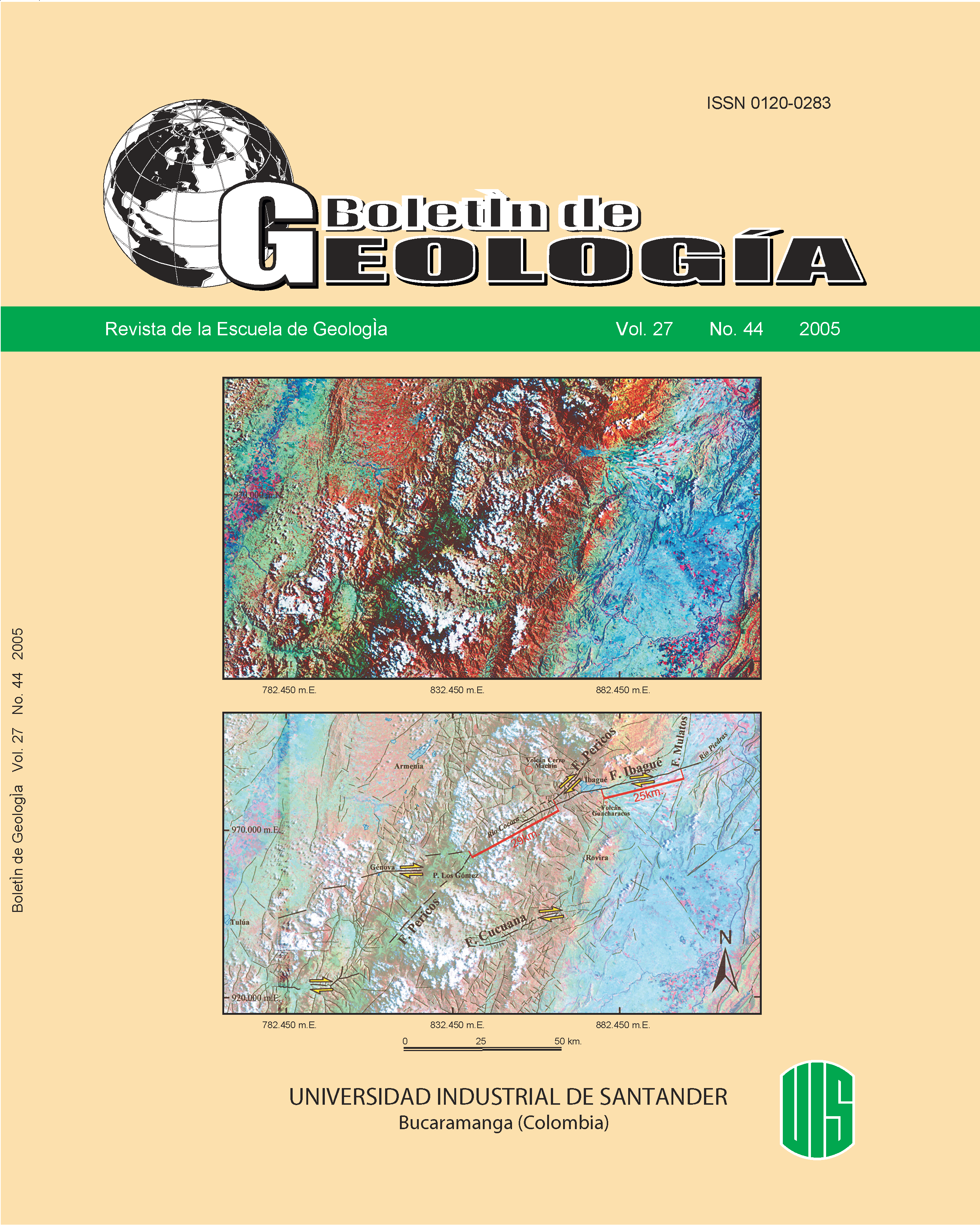Sismotectonics and geodynamics characterization of Murindo - Colombia seismic source
Published 2005-01-11
Keywords
- Seismotectonic,
- geodynamics,
- focal mechanisms solutions,
- strain rate,
- Murindó Zone
- GPS ...More
How to Cite
Abstract
Northwestern South America is a convergence zone of three major tectonic plates, Nazca, Caribbean and South America and microplates or blocks such as Panama-Costa Rica, Choco and the Northern Andean or Macondo. The displacement of these plates and microplates produce seismotectonic stresses, which have generated strong earthquakes when release. The seismic events occurred in this zone are shallow focus and destructive, reaching up to Ms = 7.5. Using empirical mathematical relationships with magnitude Ms ≥ 3,9, focal mechanism solutions and GPS plate tectonic displacement vectors, the seismotectonic deformation was analyzed. This deformation is represented by the North component of the seismic moment tensor. Low deformation velocity was obtained, which is in contrast with those determined by GPS. Therefore, we proposed that the regional stresses do not behave homogeneously on the zone.
Downloads
References
Aggarwal, Y. P., Soulas, J., Garcia, D. (1983).Contemporany tectonicas of the Venezuela Andeas andnorthern Colombia. Program and Abstracts of Papers,10th Caribean Geological Conference, Cartagena deIndias, Colombia, pp. 16-17.Aki, K., Richards, P. (1980). Quantitative Seismology.Theory and Methods. Freeman, 932 p
Alvarez, E., Gonzáles, H. (1978). Geología y Geoquímicadel Cuadrángulo I - 7 Urrao, Informe 1761, Ingeominas,Bogotá, 347 p
Alzate, M., E. (1995). Neotectónica de la Falla SanRuperto - Municipio de Frontino. Tesis de Grado.Universidad Nacional de Medellín
Bullen, K., Bolt, B. (1985). An Introduction to the Theoryof Seismology. Cambridge University Press. FourthEdition, 499 p.
Caballero, H., González, M. (1994). EvaluaciónSismotectónica de los proyectos hidroeléctricosPenderisco - Murrí. Empresas Públicas de MedellínContrato 3142 - G. Informe 217, Ingeominas, Medellín
Case, J., Duran, L., Lopez, A., Moore, W. (1971).Tectonic investigations i western Colombia and easternPanamá. Geological Society of America Bulletin. Vol.82, pp. 2685 -2712
Coral, C., (1987). Los Terremotos en Colombia yCaracterísticas de su Origen profundo. UniversidadNacional de Colombia, 199p
Coral, C., Salcedo, E. (1992). Evaluación preliminar dedaños y mapa de isointensidades en la región Chocó -Antioquia afectada por el terremoto del 18 de octubrede 1992. INGEOMINAS. Bogotá, 1992
Cossio, U., (1999). Geología de las planchas 127, 128,143, 145. Ingeominas Medellín, en preparaciónDuque, H., (1990). El Bloque Chocó en el NoroccidenteSuramericano: Implicaciones Estructurales,Tectonoestratigráficas y Paleogeográficas. BoletínGeológico, Vol. 31, N° 1, pp 1-71.
Freymueller, J. T., et al. (1993). Plate Motions in theNorth Andean Region. Journal of Geophysical Research,Vol. 98, No. B12, pp. 21 - 863
Guzmán, J., Ochoa, M. (2000). Evaluación de laAmenaza Sísmica del Eje Cafetero: una visión críticadel conocimiento. Jornadas Técnicas de Sismotectónica.Manizales, noviembre 2 y 3 de 2000. En publicación
Hilst, R., Mann, P. (1994). Tectonic Implications ofTomographic images of Subducted Lithosphere BeneathNorthwestern South America. Geology, Vol. 22, pp.451-454
